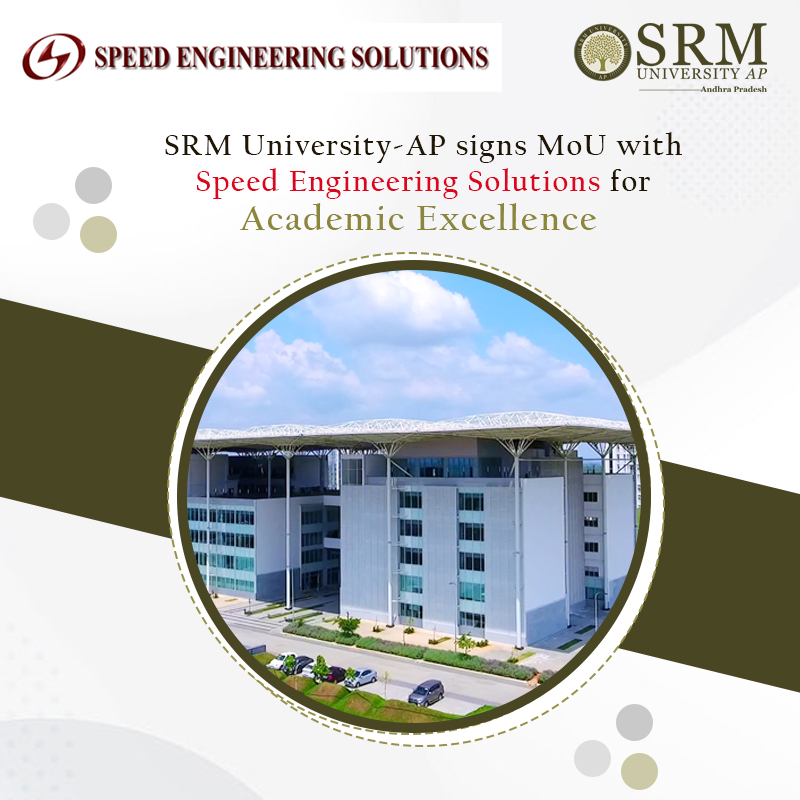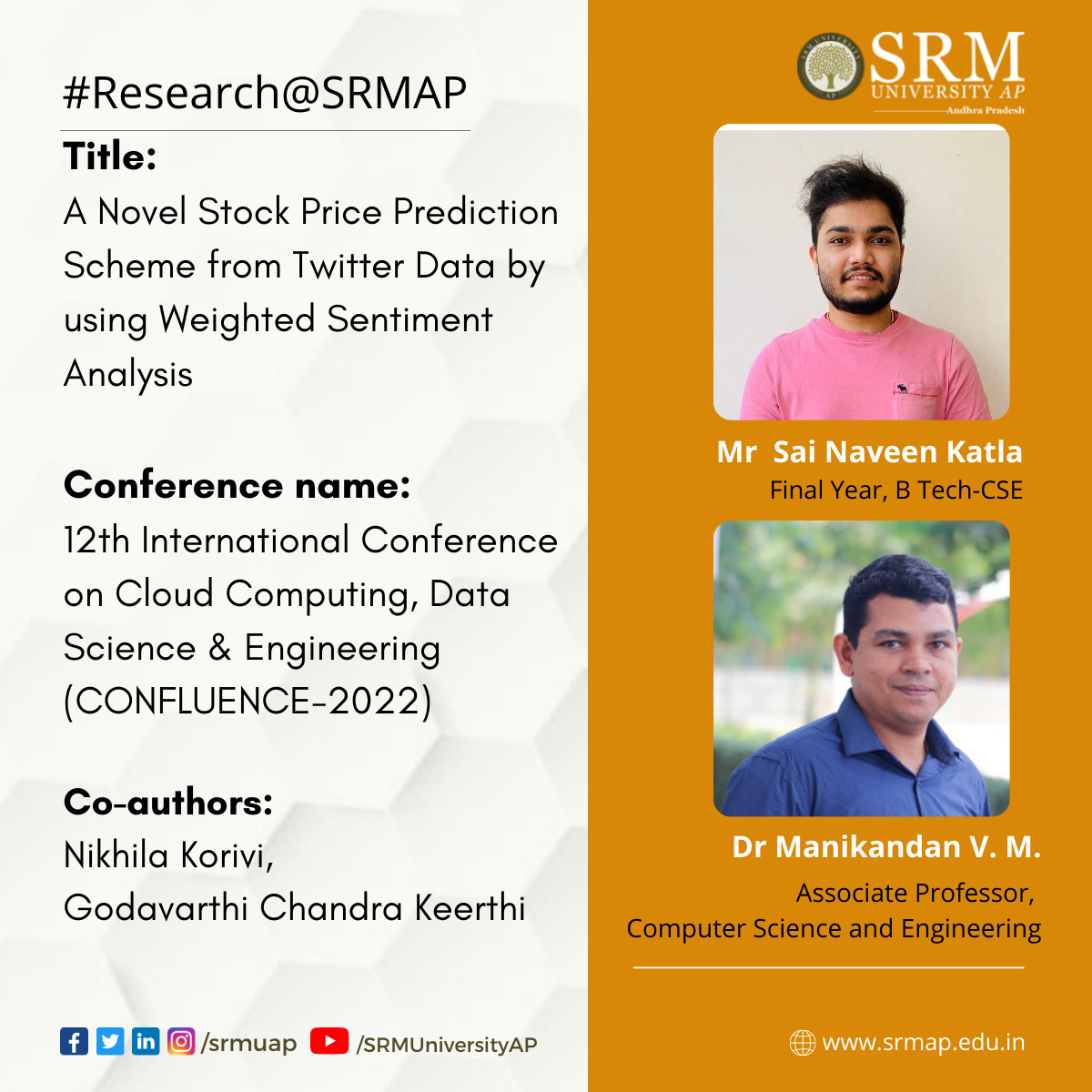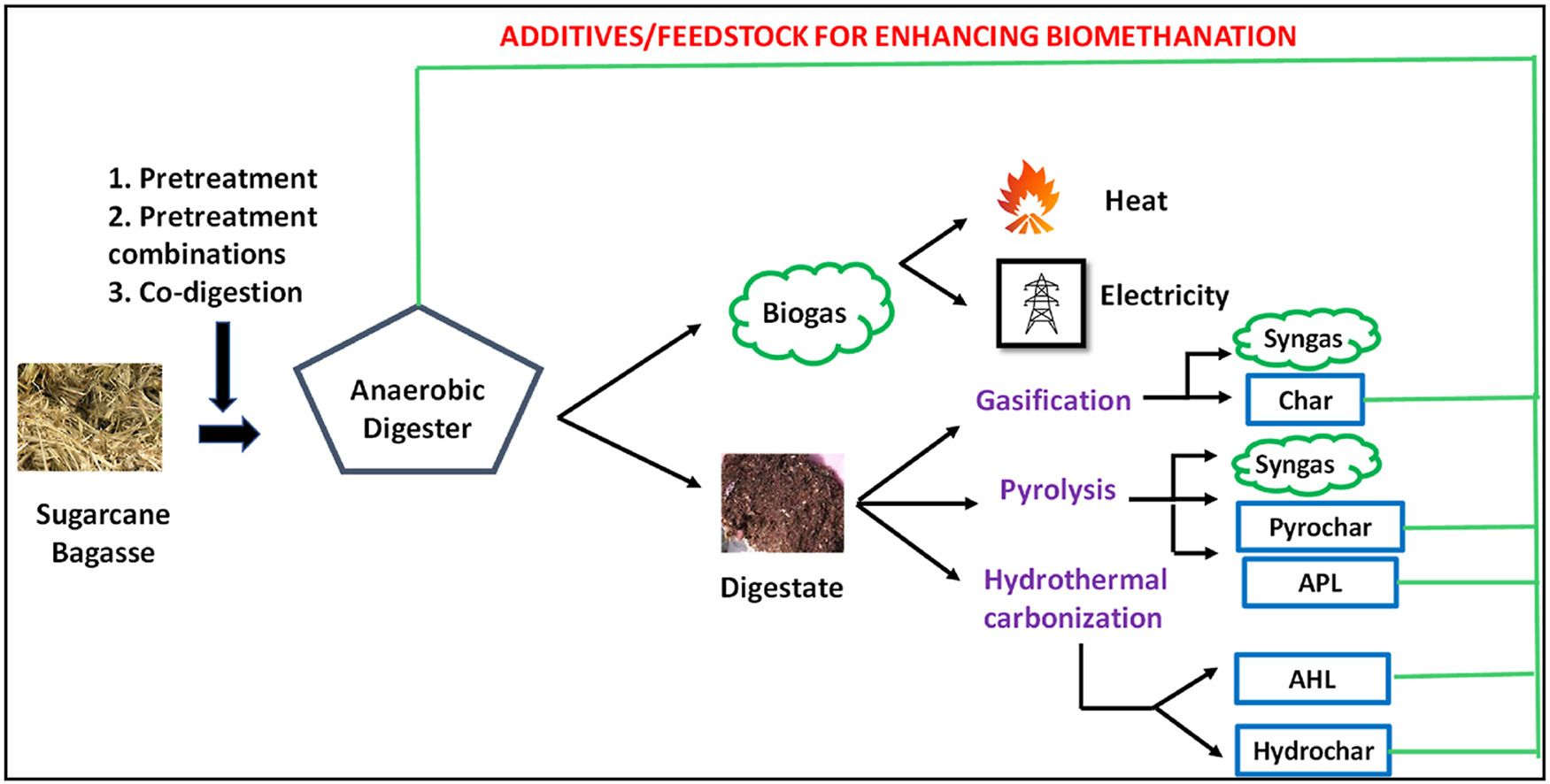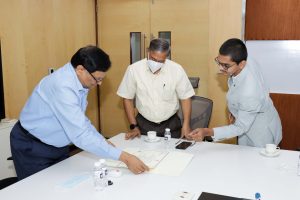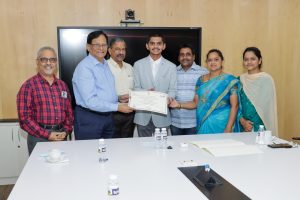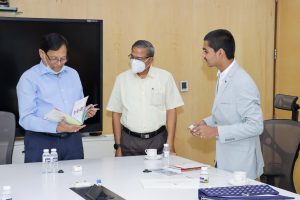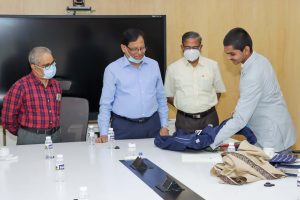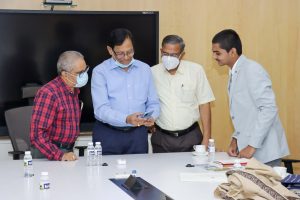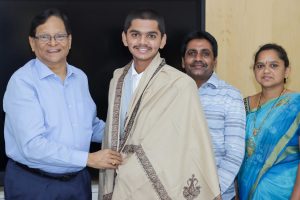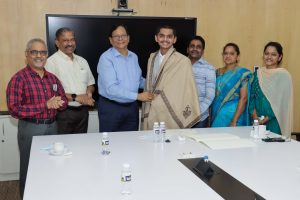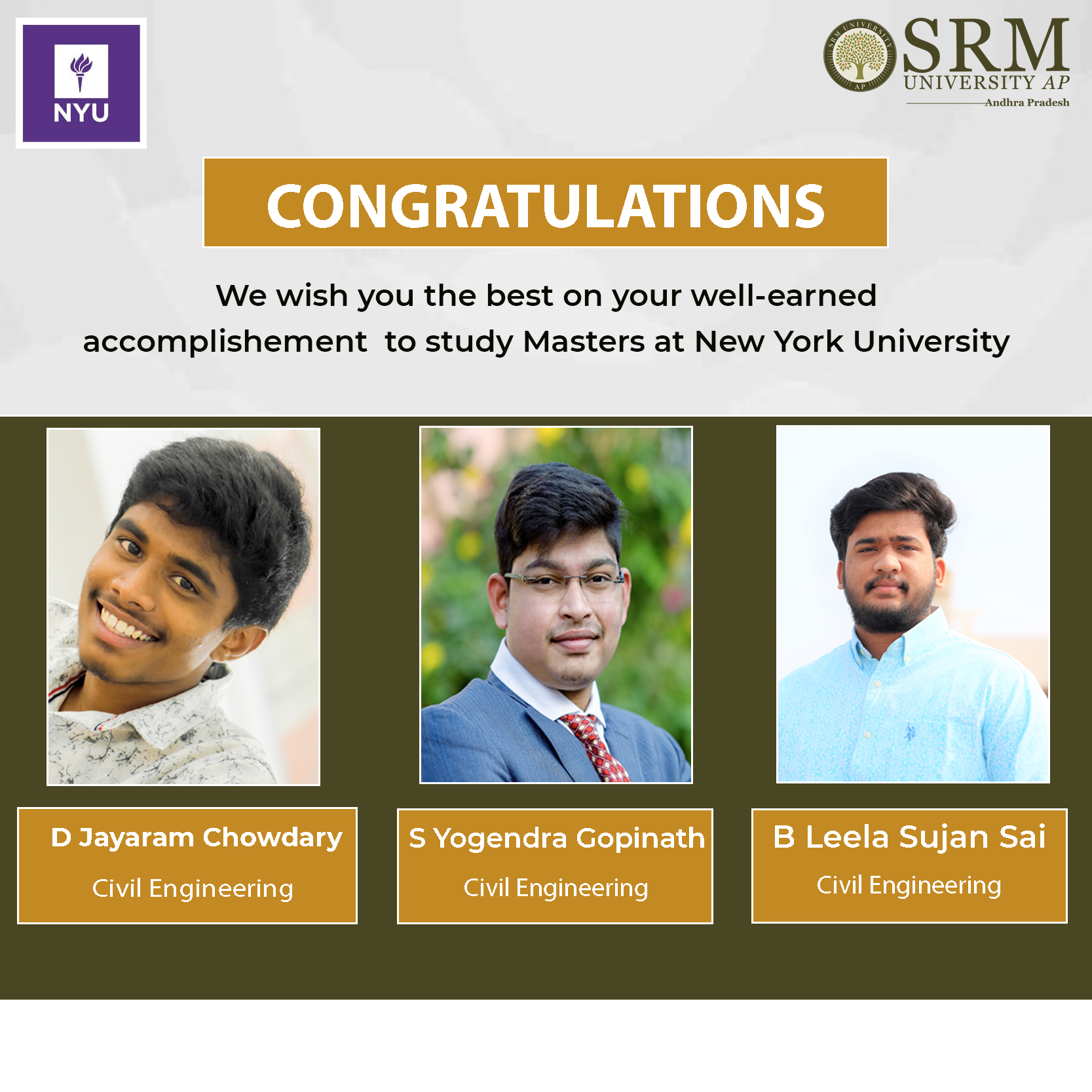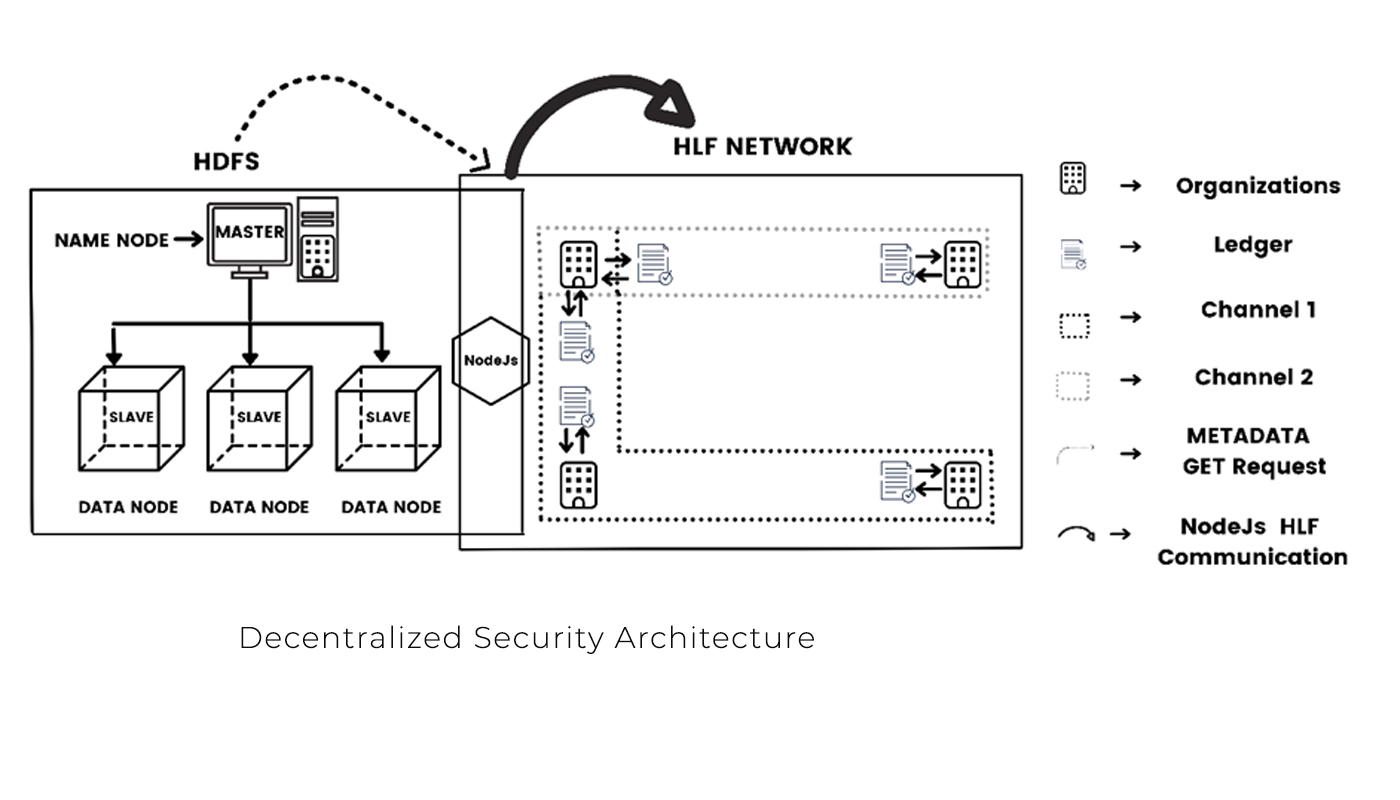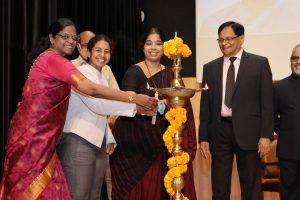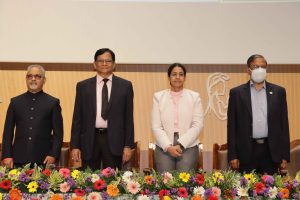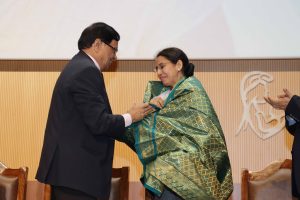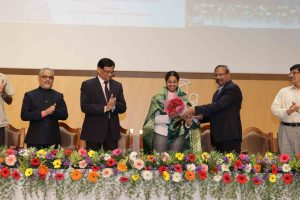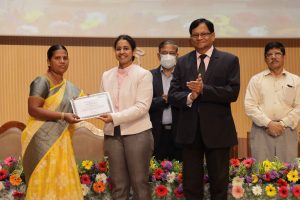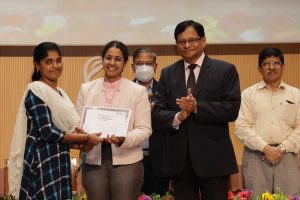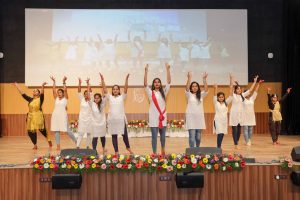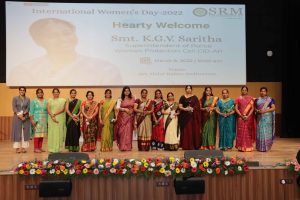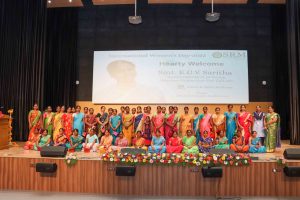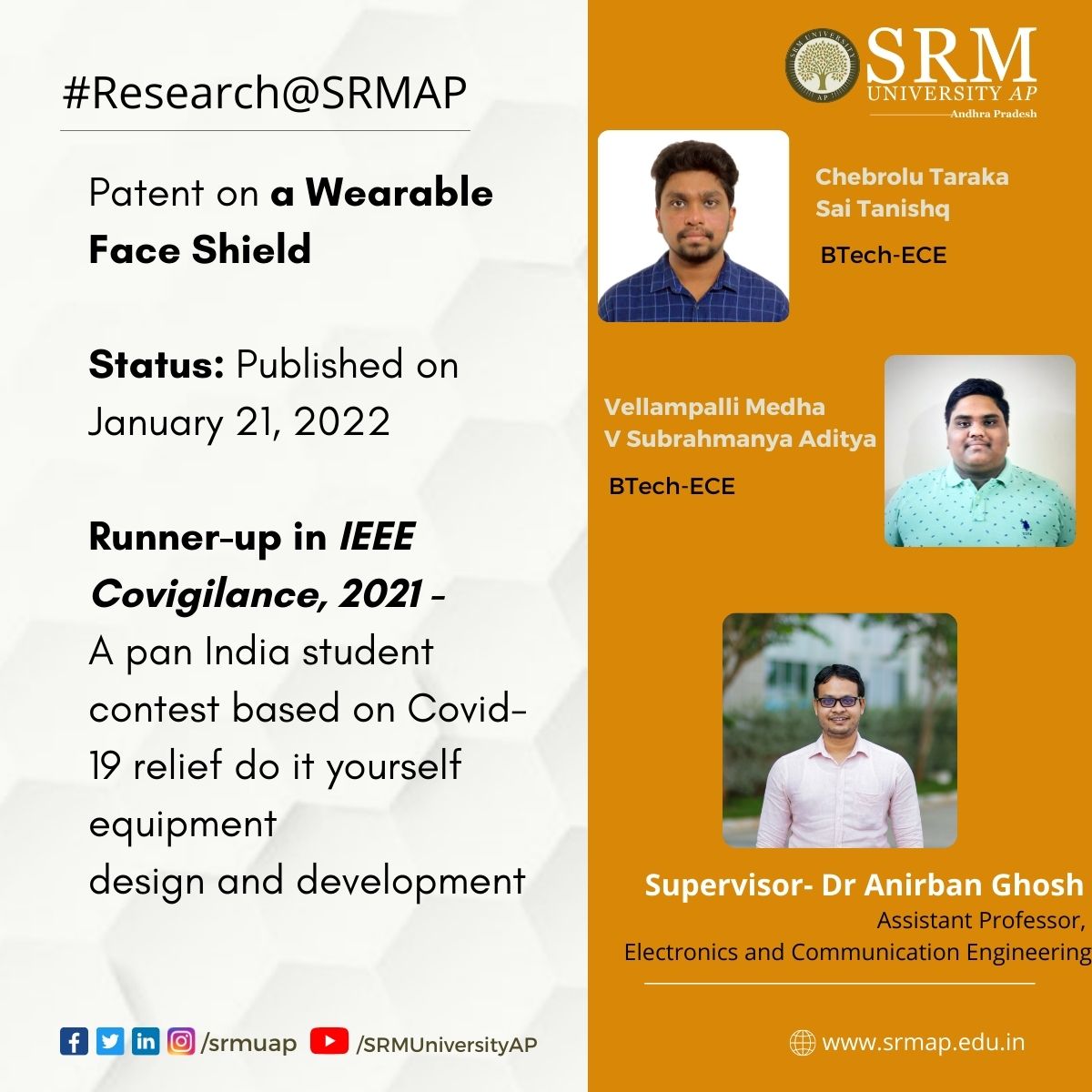SRM-AP All News
ALL News
- SRMAP signed MoU with Speed Engineering Solutions March 17, 2022
SRM University-AP has inked a Memorandum of Understanding(MOU) with Speed Engineering Solutions Pune. The MoU will significantly benefit the students of the Department of Mechanical Engineering in their studies and overall industry exposure. As part of the understanding, the following activities will be carried out-
- Speed Engineering will deliver interactive and insightful webinars on Product Design-Development and similar topics to all students of the university.
- Speed engineering will conduct online workshops on product design at subsidised charges for BTech and MTech students.
- Speed engineering will offer full-time summer internships on Industry oriented product design and development to our BTech and MTech students.
- Speed engineering will offer a series of skill-building projects based on industry work to the BTech and MTech students. They will work under the joint guidance of SRMAP faculty and experienced Speed Engineering professionals. These projects will be based on real-life industry problems.
- Speed engineering will offer in-campus internships to some of the students of SRM AP based on their project performance.
- Speed engineering will offer jobs to some of the brightest students based on their project performance.
Prof Prakash Jadav welcomed the initiative and said, “This MOU is an excellent initiative for the mechanical engineering department. Our students will get huge benefits such as the latest training on Product design and Simulations, CAD, CAE and many other things. The benefits do not end here. Our students will further be able to convert opportunities to work on live industry projects and internships into attractive job offers. I am certain that our students will reap all the benefits from this collaboration.”
Know more about Speed Engineering Solutions: About Us – Speed Engineering Solutions
Continue reading → - Machine learning algorithms predict stock market trends March 17, 2022
Understanding stock market trends is crucial for investors to make key decisions. It was indeed a wonderful moment when Katla Sai Naveen from the Department of Computer Science and Engineering, presented a paper for the first time with an intelligent solution to that problem. The paper “A Novel Stock Price Prediction Scheme from Twitter Data by using Weighted Sentiment Analysis” was presented at the 12th International Conference on Cloud Computing, Data Science & Engineering (CONFLUENCE-2022), organised by Amity University, Noida, UP, India. It was co-authored by Nikhila Korivi, Godavarthi Chandra Keerthi under the mentorship of Dr V M Manikandan, Assistant Professor, Computer Science and Engineering. The paper will later be published in IEEE Xplore Digital Library.
Abstract:
Stock market forecasting is one of the most interesting research areas for many professionals and researchers. Economic conditions, investor sentiment, current events, future guidance, and a variety of other factors have an impact on the stock market. Since the stock market changes swiftly from time to time, it might be tough for a user or investor to keep up with the shifting trend. Combining sentiment analysis with a machine learning model, a solution to this problem has been introduced. Sentiment analysis is a text mining procedure that has one of the most important uses in analysing user reviews and evaluating the overall sentiment of a piece of text. The purpose of this research work is to create a machine learning model that takes recent tweets from the Twitter API and categorises each message as positive, bad, or neutral. Later, the impact of the person who wrote the tweet is also considered while predicting the trend. The parameters such as the total number of followers, the emotion of each comment on each post of selected stock, the number of likes and retweets are considered. An overview of the selected stock’s potential will be given to the user as the output.
This research will be useful for businessmen and people with enthusiasm for the stock market. The research will provide insights and intelligence to help make profitable decisions. False positives during sentiment analysis is a major concern in this domain. The team is focused on improving the existing approaches with better methods to identify false positives.
Continue reading → - A novel method of synthesising 2D transition metal oxide layers March 15, 2022
Patent application No: 202241005220
Publication date: 11/02/2022
Title: Two-Dimensional Transition Metal Oxide Layers and a method for their Synthesis
Inventors: Dr. Jatis Kumar Dash, Shaik Md. Abzal, Kurapati Kalyan, Sai Lakshmi Janga
Department of Physics, SRM-University-AP, Andhra PradeshThe Department of Physics is glad to announce that Dr Jatis Kumar Dash and his PhD Scholars Shaik Md. Abzal, Kurapati Kalyan and Sai Lakshmi Janga have got their patent “TWO-DIMENSIONAL TRANSITION METAL OXIDE LAYERS AND A METHOD FOR THEIR SYNTHESIS” published on February 11, 2022.
About the Patent
Extensive use of portable electronic products and the rapidly growing commercial markets in smart electric appliances have created a seemingly high demand for flexible, wearable high-performance photoelectric devices and energy storage technology. In the search for new materials to meet these criteria, one promising solution may be the two-dimensional (2D) material heterostructures, assembled by stacking different conventional 2D materials (for example, graphene, transition metal oxides, carbides, and chalcogenides) in hetero-layered architectures.
These 2D materials stackings are ultrathin layered crystals that show unusual physicochemical properties at few-atom thickness. These 2D heterostructures offer several key advantages for the next-generation devices such as (i) atomically thin 2D nanosheets provide a larger surface area due to complete exposure of the surface atoms, (ii) the edge sites in 2D nanosheets are chemically more reactive than their basal planes and the open gaps enable the intercalation of electrolyte ions and (iii) the high mechanical strength and flexibility at atomic dimensions allow them to be used in the next-generation wearable electronics.
But the growth and stacking of 2D materials is always a challenge. Also, the existing growth tools are complex and expensive. Here, at SRM University-AP, we have fabricated the large-area ultra-thin 2D transition metal oxide (TMO) layers using an easy and cost-effective method. In addition, these 2D TMO layers are further integrated to different other 2D materials for their use in nano-electronic devices. Our work shows the great potential of ultra-thin TMOs in 2D-material-based flexible electronics.
Social Implication
2D materials are the prime candidates for making flexible, wearable, foldable and transparent self-powered smart electronic devices. The next-generation smart electronic devices will be made of 2D materials heterostructures which will need less operating power, less consumption of materials and will have ultimate scalability.
The team is also in the process of optimization and aims to make prototype flexible 2D supercapacitors, photodetectors, ultrathin transistors, and various sensors.
- Innovatory conversion of bagasse to biogas March 15, 2022
The Department of Environmental Science is glad to announce that Dr Lakhveer Singh has published a paper titled “Anaerobic digestion of sugarcane bagasse for biogas production and digestate valorization” in the journal ‘Chemosphere’ having an impact factor of 7.08 in collaboration with IIT Delhi.
Abstract of the Research
The complex structure of biomass is recalcitrant to degradation and is a major hindrance for anaerobic digestion, so different pre-treatment methods are applied to deconstruct the bagasse for microbial digestion. In this review, different processes developed for the pre-treatment of bagasse and their effect on biogas production have been extensively covered. Moreover, combinations of pre-treatment methods, co-digestion of bagasse with other waste (nitrogen-rich or easily digestible) for enhanced biogas production and biomethane generation along with other value-added products have also been reviewed. Thus, this review highlights the major emerging area of research for improvement in bagasse-based processes for enhanced biogas production along with digestate valorization to make the overall process economical and sustainable.
The paper offers a promising solution with respect to the conversion of agricultural waste to biomethane along with other value-added products. As far as Dr Singh is concerned, future research should also be directed towards the life cycle assessment of different integrated technologies for quantifying the environmental and economic benefits which will help to choose the most sustainable option for digestate valorization.
- Sikindhar Jaladi represents Andhra Pradesh in National Youth Parliament Festival 2022 March 15, 2022
The youngest National level participant of the year
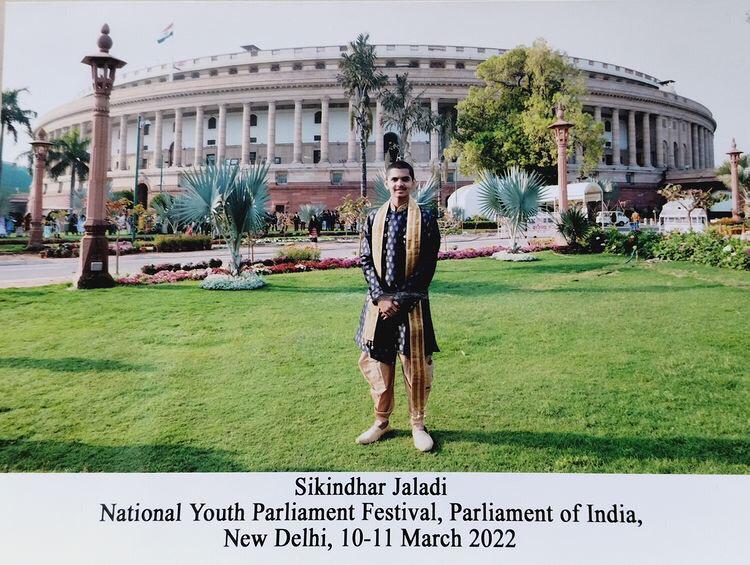 The national youth parliament initiative intends to strengthen the roots of democracy among India’s youth population. Sikindhar Jaladi, a first-year BTech Computer Science student at SRM University-AP, won district and state level elocution competitions and participated in the National Youth Parliament Festival 2022 conducted by the Ministry of Youth Affairs and Sports, Government of India.
The national youth parliament initiative intends to strengthen the roots of democracy among India’s youth population. Sikindhar Jaladi, a first-year BTech Computer Science student at SRM University-AP, won district and state level elocution competitions and participated in the National Youth Parliament Festival 2022 conducted by the Ministry of Youth Affairs and Sports, Government of India.Mr Sikindhar bagged first place in the district level elocution competition in the District Youth Parliament in Krishna District on February 19, 2022, wherein he talked on the topic of Digital India. The top 2 participants from all districts of Andhra Pradesh competed at the state level, and Mr Sikindhar proved his mettle again, securing first place in elocution on the topic Startup India, Standup India.
Across India, approximately 2,40,000 ( two lac forty thousand) people have competed on all levels. In that, only 87 (3 from each state, 29*3=87) of them were shortlisted to attend the national level. Out of which only 29 (1st place winners from each state) of them availed a chance to speak at the Parliament. Being the 1st place winner from Andhra Pradesh, Mr Sikindhar represented the state and delivered his speech in the Parliament House (Sansad Bhavan) in front of the Honourable Speaker, Cabinet Ministers of the central Government, Entrepreneurs and other Dignitaries.
National Youth Parliament Festival (NYPF) is a national level competition organised by the Union Ministry of Youth Affairs and Sports in partnership with the Nehru Yuva Kendra Sangathan since 2019. (NYKS).
Read this exclusive interview with Mr Sikindhar on his journey to Indian Parliament House
“I am delighted to have got the opportunity to speak at Parliament, which is the highest forum of discussion and debate on public issues and national policy”, says Mr Sikindhar. “Also, I was the youngest youth parliamentarian aged 18 among all the participants”, he added joyfully.
Preparation for the State Level Elocution Competition
The topics were released one day before the state-level competition. Having a dream to become an entrepreneur, I chose Start-up India-Stand-up India among the given topics. I know how the start-up ecosystem has been growing in India and the sectors in which the Indian start-ups are emerging. On an important note, I would like to thank SRM University-AP for providing an entrepreneurship cell( Ecell) that solely focuses on starting up and inculcates leadership and entrepreneurial qualities in young minds. I would also thank our director of entrepreneurship cell Udayan Bakshi sir. I’m a member of the SRM Ecell at the Industree Owl, which helped me get acquainted with some startup and business terminologies.
Experience at SRM AP
Being a fresher, I like the experience here at SRM AP. I have good friends from all over the country. Those from the North Indian states like Haryana, Uttar Pradesh, West Bengal and Bihar help me gradually learn Hindi. And that knowledge of Hindi helped me highlight some points of my speech in Hindi, which made my address more attractive. Suman Kumar from Bihar, my classmate and CSE project partner at SRM AP, helped in preparing my speech. Hopefully, I will enjoy and experience the fullest from the university once the university reopens for onsite classes.
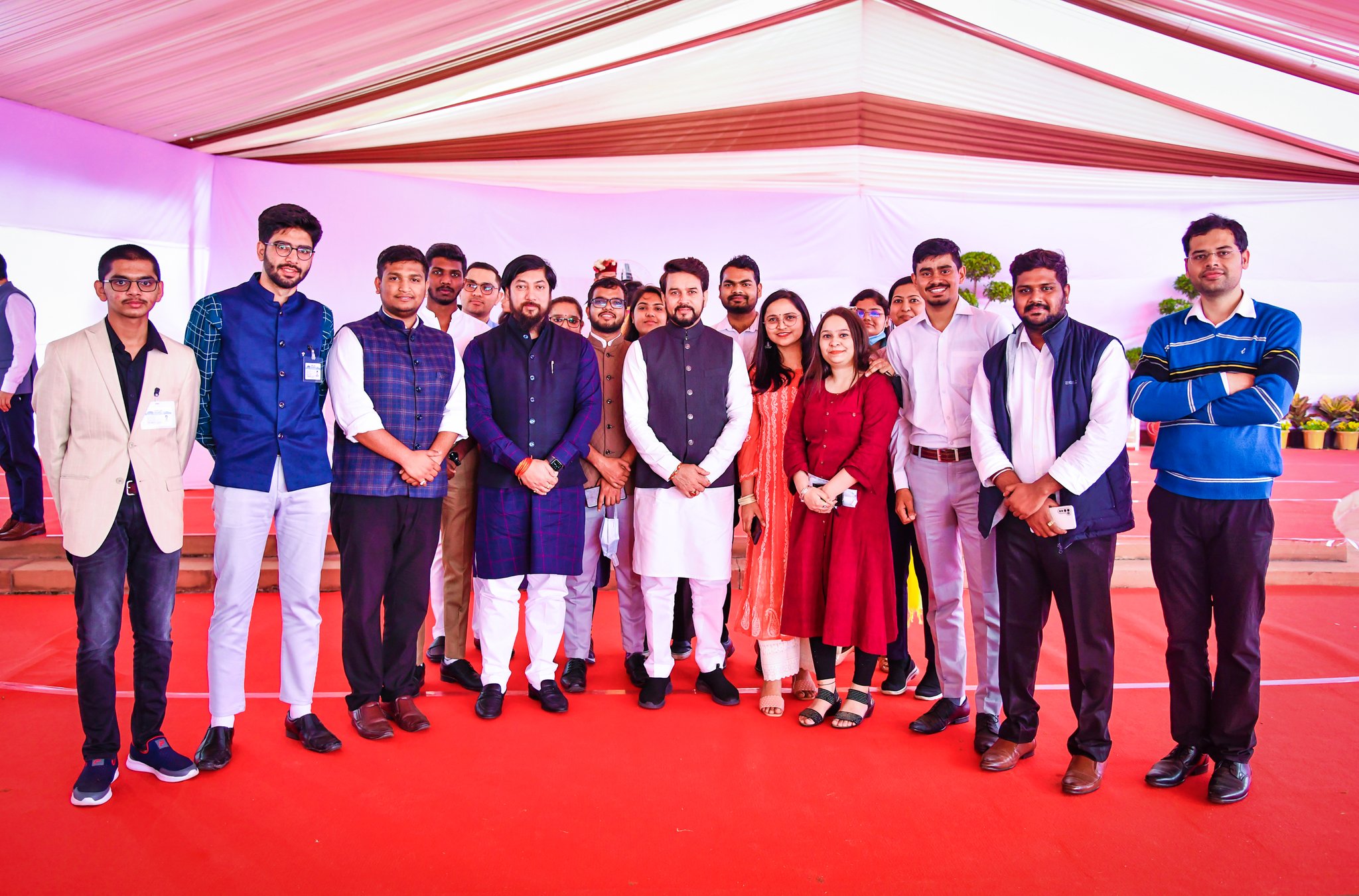
About the National Level Elocution competition in Delhi
The experience at the national level competition was truly unique. Best speakers from all the states were competing there. Though I was a bit anxious, I’m happy that I learned many things. Among all the speakers and participants, I was the youngest one. I loved the whole trip and made a lot of connections and friends. I met Shri Om Birla– Hon’ble Speaker of Lok Sabha, Shri Anurag Singh Thakur– Hon’ble Minister of Youth Affairs and Sports, Shri Nisith Pramanik– Hon’ble Minister of State, Youth Affairs & Sports. We had a beautiful conversation with the honourable union ministers Anurag Singh Thakur and Nisith Pramanik about the problems faced by the people of India, responsibilities and fundamental duties of the youth and the people of India in policymaking. I would also like to share that I had a chance to have dinner with the honourable Union Minister Shri Nisith Pramanik on March 10th evening. We also experienced a beautiful cultural event with the union ministers and members of Parliament (MPs).
Support received from SRM AP
Definitely, SRM AP played a crucial role in the journey. When the state level results were announced, our beloved Vice Chancellor sir, Pro-Vice-chancellor sir, Dean SEAS Prof B V Babu sir, Student Affairs Assistant-Director Revathi ma’am, ITKM Associate Director Arundhati ma’am, ITKM department, management, faculty members, and friends encouraged and motivated me. As I mentioned earlier, I would like to thank SRM University for providing an entrepreneurship cell (Ecell) that solely focuses on starting up and teaches leadership and entrepreneurial qualities in young minds. I’m a member of the SRM Ecell at the Industree Owl department, which helped me get acquainted with some startup and business terminologies.
Continue reading → - CR & CS inks MoU with Ziroh Labs for Academic Alliance Program March 11, 2022
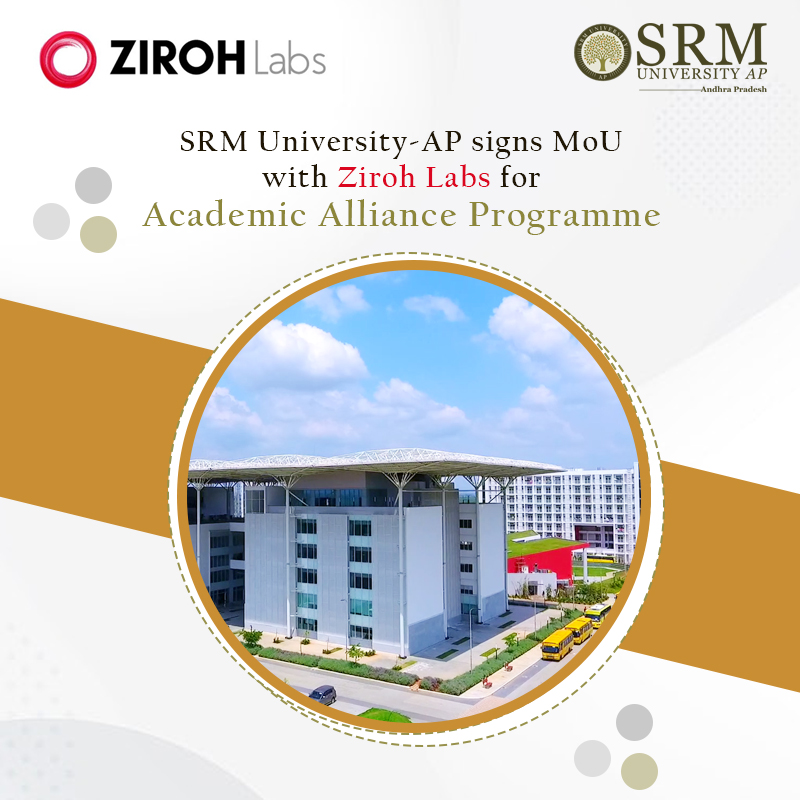 The Department of Corporate Relations & Career Services at SRM University-AP collaborates with Ziroh Labs for the Academic Alliance Program. Under this academic alliance program, Ziroh labs will be acquiring patent solutions and other project developments from the renowned faculty of SRM in coordination with the creative pool of students/scholars.
The Department of Corporate Relations & Career Services at SRM University-AP collaborates with Ziroh Labs for the Academic Alliance Program. Under this academic alliance program, Ziroh labs will be acquiring patent solutions and other project developments from the renowned faculty of SRM in coordination with the creative pool of students/scholars.The Earn While You Learn (EWL) Program enables the students of SRM University-AP to furnish and co-develop the products with Ziroh labs and get rewarded monetarily. Ziroh labs will provide the frameworks, guidelines, and documentation required to complete a project. Participants will receive mentorship from industry experts on live projects and have an opportunity to meet with some of today’s finest minds in innovation. Ziroh Labs will also provide Internship and Placement opportunities to SRM University-AP students.
Representatives from Ziroh Labs expressed their gratitude to Dr R Premkumar-Registrar, Mr M S Vivekanandan, Associate Director- Corporate Relations & Career Services and Mr P. Venkateswara Rao-Senior Manager, Internship, Corporate Relations & Career Services for making this collaboration possible.
Continue reading → - Journey of civil engineering students to New York University March 11, 2022
By earning a ticket to NYU Tandon School of Engineering for the Master’s programme, Students of Civil Engineering; Jayaram Chowdary Dasari, S Yogendra Gopinath and Leela Sujan Sai Borra have added one more feather in the department’s cap. It is a matter of joy and pride for the Department of Civil Engineering and the university as more and more students are getting admitted to international universities. Harnessing the true potential of each student and preparing them for a bigger world have always been the primary focus of SRM University-AP.
They are groomed from a very early stage to reflect on their educational objectives and initiate the appropriate action. “I had started my preparation way ahead and cleared the GRE and IELTS tests, then I consulted my Professors Dr Bhagath sir, Dr Narasimha Murthy sir and Dr Uma Maheswar Rao sir for guidance and with their help, I shortlisted the universities and the best programmes which can fulfil my future goals,” said Yogendra.
“We will never forget our faculty members for their immense support in helping us find the right universities, and also for the initiatives taken by the department such as conducting webinars to educate students about the application procedure for higher studies.” Borra and Jayaram also marked their gratitude to the department.
The Office of International Relations at the university has also played a crucial part in their achievement as it walked them through the right procedures for an overseas application. “I shall forever be thankful to Dr Shweta ma’am for her valuable guidance on drafting an incredible SoP” added Yogendra.
An enriching learning environment with exposure to global educational practices rendered at SRM University-AP will foster the right academic spirit in students and enable them to move ahead with better clarity of purpose. Also, training imparted by the expert faculty will help them gather deeper insights and transform themselves into professionals in their respective fields.
- Introducing decentralized security system using blockchain technology March 10, 2022
The Department of Computer Science and Engineering is delighted to announce that Dr Rajiv Senapati and his research group; Abhiram Chakravadhanula, Jaswanth Kolisetty, Karthik Samudrala and Bharat Preetham have published a research article titled “A Novel Decentralized Security Architecture for the Centralized Storage System in Hadoop using Blockchain Technology” in the Scopus indexed IEEE 7th I2CT (The premier conference for the latest discoveries in Convergence in Technology in Asia Pacific).
Over the past decades, the Big Data ecosystem is experiencing a humungous explosion in the generation and exchange of information. Trading such delicate information can serve as a profitable knowledge resource in the present economy. However, serious concerns have been raised about the security and assurance of delicate data as the conventional safety architecture in centralized storage systems does not meet its nuanced requirements. Blockchain technology offers a promising solution for big data protection due to its decentralized nature. Through this research article, Dr Rajiv Senapati and his students intend to introduce a decentralized security architecture in centralized storage systems such as Hadoop to address its existing vulnerabilities.
Abstract of the Research
Big Data is huge in volume, diverse in information, and growing at flourishing rates. The major distributed file systems in the current market in Big Data Analysis include Apache Hadoop, Storm, Cassandra, Flink, Cloudera, and many more. Hadoop is an open-source framework divided into Hadoop Distributed File System (HDFS) and Map-Reduce. Hadoop plays a leading role in storing and processing Big Data in contemporary society as it is cost-effective and can manage large volumes of data in low-cost commodity hardware. HDFS is a type of Data Warehouse which is scalable and has fast access to information.
Metadata is the information about the data, such as which block is storing on what datanode, how many replications that block has, and on which datanodes those replications reside. In HDFS, this metadata is stored at a fixed place in namenode, and attackers can access the metadata and modify it without notice. Also, metadata is mutable, which means the attacker can erase his presence easily.
In this paper, to resolve this issue, we have provided a mechanism using blockchain technology that follows a decentralized architecture against the centralized architecture followed by HDFS. Hyperledger Fabric (HLF) is the blockchain proposed to be effective and trusted for such a purpose. HLF is a private blockchain with a distributed immutable ledger. The metadata will be stored in the ledger. If an attacker tries to modify the data, he cannot erase his presence as the ledger is immutable, unlike HDFS. Further, the work proposed in this paper can be extended in real-time HDFS with a secure ledger and multiple nodes.
- KGV Saritha joined the International Women’s Day Celebrations 2022 March 9, 2022
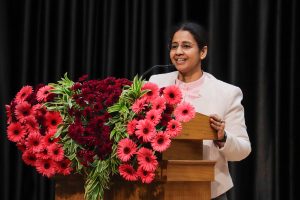
Every International Women’s Day is a new opportunity to render new definitions to womanhood. It calls the attention of the world to take a moment and marvel at the unimaginable, women across the globe have made possible. It is indeed incredible what the womenfolk has been contributing to the world amidst a thousand adverse circumstances. SRM University-AP proudly celebrated this women’s day by marking respect to women across different walks of life for the enormous grit and endurance they have put on. Smt KGV Saritha, Superintendent of Police, Women Protection Cell, CID-AP was the distinguished guest of the day. Her valuable presence and enriching experience added much essence to the day and made the celebrations more meaningful.
Ms Revathi Balakrishnan, Assistant Director, Student Affairs, welcomed the gathering. She introduced the history of the observance of women’s day which goes back to the early 1900s when women in the industrialised world raised their voices and rebelled against the harsh working conditions. She also enunciated the importance of celebrating the success story of every woman on a global scale.
Prof. V.S Rao, Vice-Chancellor delivered the presidential address. He started off by offering warm women’s day greetings to all the faculty, staff, and students. He also emphasized the importance of achieving the goals of the university by giving impetus to women’s empowerment. Citing various examples of renowned women leaders from different spheres, he reminded the unbeatable power of womanhood. He also recalled how the state government has formulated reservation policies that helped women of Andhra Pradesh to excel in the field of education. “The university also strives to open new vistas of learning for the girl students through different clubs such as the e-cell that promotes women entrepreneurship.” he asserted. While gender disparity continues to perpetuate even in the industrial capitals of the world, he reminded, how important it is for India to look up to countries like Bangladesh that have been taking extraordinary strides in empowering women over the last two decades.
Smt KGV Saritha, the chief guest of the day, addressed the gathering. She paid respect and obeisance to all the teachers of SRM University-AP and expressed her happiness to be a part of the university in the women’s day celebrations. Talking about ‘Gender Equality’ which is one of the Sustainable Development Goals of 2030, she articulated the relevance of this year’s IWD theme #BreakingTheBias. While taking references from myths and history to exemplify the fortitude of women, she did not overlook the record of men in India who have played a crucial role in placing women on high pedestals. She also took pride in the cultural and political legacy of the country that always honoured womanhood. “While ladies of many countries in the world are taking out to streets to choose their leaders, We Indians are proud to have a constitution which ensures the right of Indian women to choose their leaders through universal adult franchise,” she remarked.
Despite the prevalence of social evils like Child marriage and Sati, women in India like Savitribai Phule have stewarded various socio-religious movements to transform the patriarchal face of the Indian milieu. She went on to cite examples of Sindhuthai Sapkal, the great Indian social worker and Manasi Joshi, the Indian para-badminton player who have displayed the mettle of Indian womanhood by transforming their weaknesses into the greatest of their strengths. She called out to all the women to awaken their innate strength and break the biases they carry within. Revealing the mantra “Love Yourself, Respect Yourself, and Look at yourself with your own eyes”, she alerted all the women to pay attention to their physical fitness, mental agility, and emotional balance.
Further, Ms Revathi Balakrishnan introduced the Uttam Pratibha Mahila Awards, a new initiative of Prof. VS Rao foundation to honour the women who have been contributing to the welfare of the university. Awards were distributed across various categories such as security, landscaping, mess and canteen etc. All the women faculty, heads of various departments and other staff were also felicitated. Cultural events including dance performances, music medley presentations were also organised as part of the celebrations. Dr Arundhati Ghanwar, Associate Director-ITKM proposed the vote of thanks. She expressed gratitude to Smt KGV Saritha on behalf of the university for her inspiring presence on the day. She also thanked the vice-chancellor, other dignitaries and the management who continue to make this university a wonderful working place for all the women.
Continue reading → - A Wearable Face Shield: Pioneering engineering invention March 5, 2022
The Department of Electronics and Communication Engineering is proud to announce the remarkable achievement of the students Chebrolu Taraka Sai Tanishq and Vellampalli Medha V Subrahmanya Aditya. They have designed a wearable face shield and secured the second position in IEEE Covigilance, 2021 – A pan India student contest based on Covid-19 relief do it yourself equipment design and development, under the guidance of Dr Anirban Ghosh, and got a patent published for their prototype developed as part of the competition. The team also participated in the 4th Research Day organized by SRM University-AP and received a gold medal.
The prototype was submitted in the design competition on July 30, 2021, and after 40 days of rigorous brainstorming, component procurement and prototype development, the final model was submitted for evaluation. Based on prototype execution, feasibility of manufacturing and suitability of the model to contain the spread of the pandemic, the team secured second place in the Pan India contest, and it was deemed fit to address the two criteria; innovation challenges like Innovation of homemade masks/shields/PPEs and innovation of a feasible solution to control covid-19 spread while the schools and colleges are reopening. Further, this prototype was submitted to the patent office under the name “A Wearable Face Shield” (Application no:202241000990) and the patent was published on January 21, 2022.
Their accomplishment bears testimony to the fact that unflinching determination towards your goals and consistent efforts to make them come true will always pay off. Designing a wearable face shield is a well-timed innovation as the pandemic shows no sign of retreat and face shield has become one of the daily necessities of all mankind.
About the Prototype
The wearable face shield is a medical protective device, and it comprises a frame for securing the shield to the head of a wearer, a transparent sheet extending from the frame, a detection circuit that is mounted on the frame, a switch, and a battery module. The detection circuit comprises of a control unit that processes the sensed data received from proximity and temperature sensors to generate output signals and an alerting unit that comprises LEDs, buzzer and it provides an indication of– (i) the presence of a detected external object within a pre-determined distance of the wearer (ii) the sensed body temperature of the wearer. The alerting unit is placed strategically to alert people via visual and audio signals respectively.
Such precautionary detection and proximity alert prototype can prove instrumental in early diagnosis and isolation aiding in crowd management and free movement in places of social gathering. Hence, a wearable face shield ensures adequate separation between persons and facilitates temperature monitoring and early detection of disease.
They are currently working on a project called “Human Monitoring System” (HUM). It is an all-pervasive system designed to measure and keep track of the heartbeat, blood pleasure, temperature, location, Spo2 level etc of the user. In the event of an emergency or critical drop in any of the vitals, the system can automatically alert the local hospital, ambulance service and relatives.


